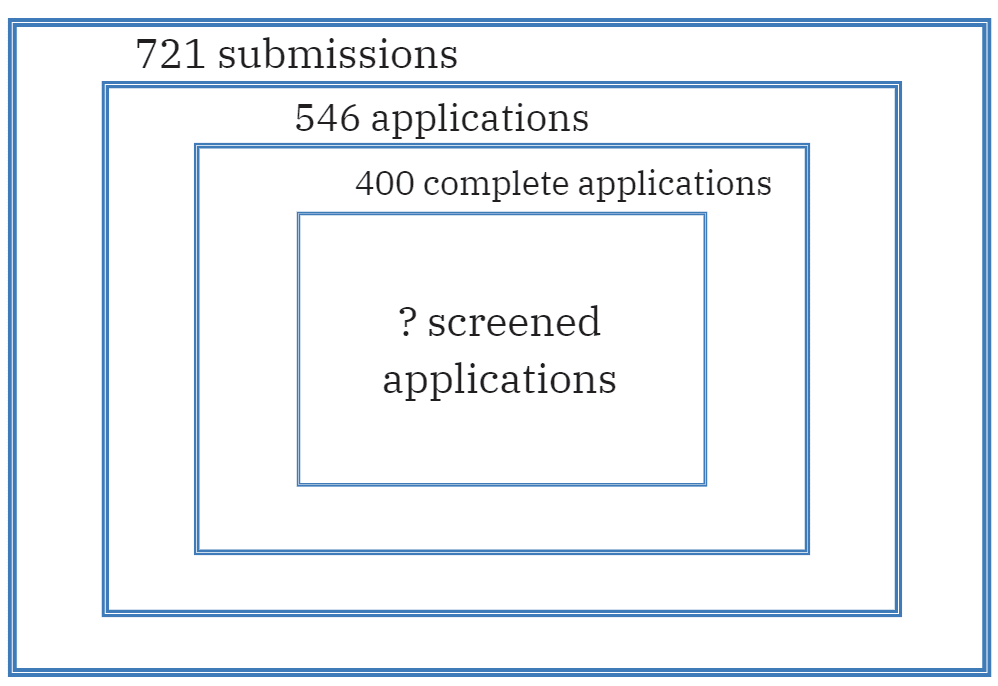We received 721 submissions in response to our grant announcement, 10-100 times more than is typical for a first-time grant announcement. We’re excited about the quality as well as the numbers – there are some really interesting ideas as well as dozens of cool videos, but given the large number of applications the evaluation process may take a little longer than we were hoping. We will keep everyone up to date every two weeks in the newsletter. For applicants and anyone else who might be curious, here is the first such update.
We have finished consolidating the 721 submissions into 546 distinct applications (some applications came in multiple pieces, and next time we’ll provide better instructions on how to merge multiple PDF documents into one), and identified approximately 400 that filled out our application form. Those who did not fill out an application form will receive a letter within the next few days indicating that they are not eligible for the current grant announcement and explaining how to learn about and be more competitive in future grant announcements.
We are currently in the process of screening the 400 complete applications, and screeners at this stage are mainly looking at whether the application is proposing a bona fide research and development project, as opposed to funding agricultural extension or community development operations with little or no research component. As stated in Section A.4.4 of the guidelines for applicants:
“We generally fund applied field research, including on-farm trials, as opposed to basic laboratory research. However, for scaling up technologies we plan to rely on private-sector commercialization, government agricultural extension services, or affiliated impact investment funds rather than philanthropic capital.”
Screeners are also looking at whether the project is relevant to a sizable population, and if so whether there is a reasonable path to widespread adoption. A sizable population needn’t be international or even national – it could, for example, be a single state in India – but a project that’s only relevant to a specific village or an academic study that’s unlikely to be adopted on farms is not going to meet our criteria for expected impact.
In other words, screeners are looking for applied research and development (R&D) projects with a strategy for large-scale adoption.
We hope to have our initial screening completed by the next newsletter and will also inform applicants individually of the results. Following the completion of the first round of screening, we will prepare a report on those that passed screening and distribute it to the membership to clarify priorities prior to soliciting technical peer reviews on a subset of them. We’re somewhat overwhelmed and definitely humbled by the volume of applications, but will try to be as transparent and helpful as possible throughout the evaluation process.
Once we’ve brought on some additional administrative support and the numbers are more manageable, we look forward to collaborating with finalists to co-create the details of projects.
— Grow Further




